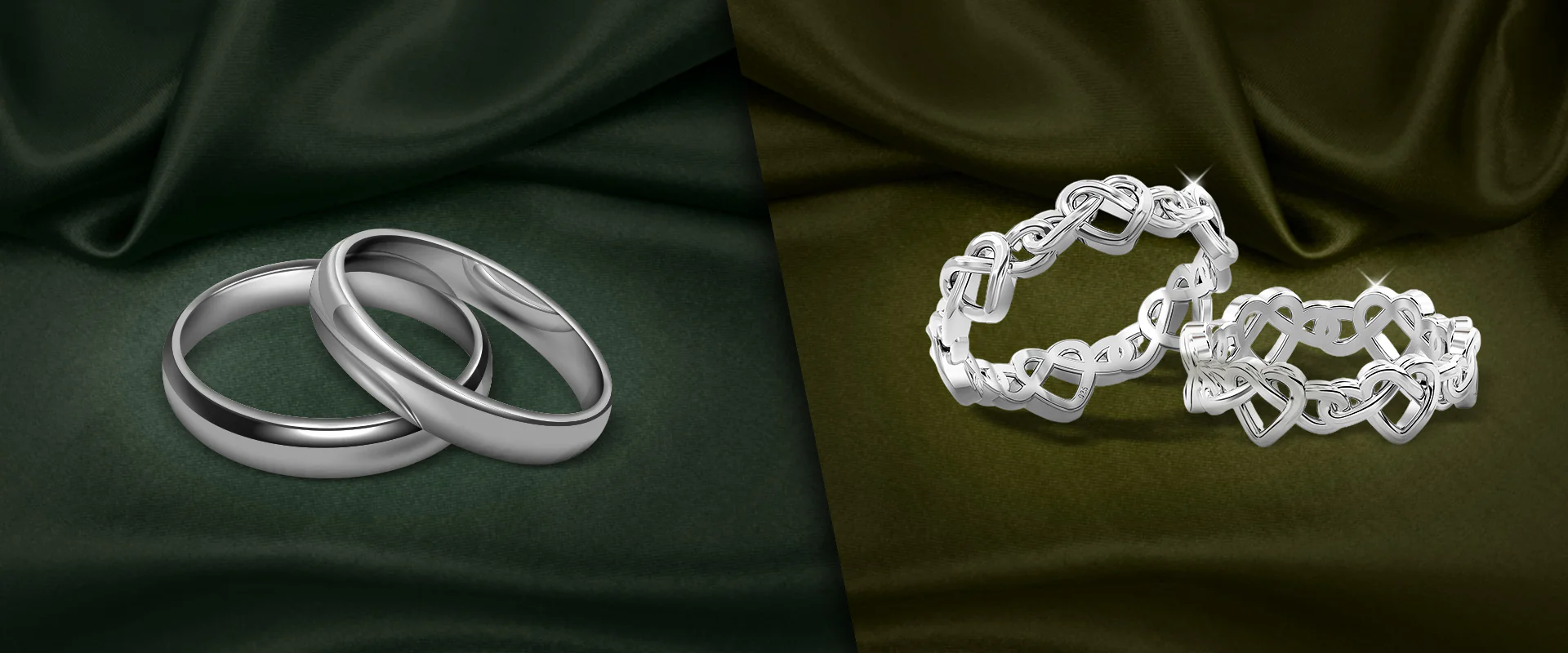
925 pure Silver is an alloy composed of 92.5% pure silver and 7.5% of another metal, commonly copper. Pure silver is too soft for most jewelry, which is why the addition of copper makes it stronger while maintaining the beautiful shine and reflective quality of silver. This balance of purity and durability has made 925 pure silver the go-to material for crafting high-quality jewelry such as silver earrings, Silver rings, Silver pendants, and Silver lockets.
| Criteria | 925 Sterling Silver | Silver Alloys |
|---|---|---|
| Purity | 92.5% pure silver | Varies; can contain less silver (e.g., 90%, 80%, or no silver at all in alloys like nickel silver) |
| Strength and Durability | Strong but relatively soft and prone to scratches | It can be stronger and more durable depending on the alloy (e.g., Argentium silver is more resistant to tarnish) |
| Appearance | Bright, shiny, and reflective, classic silver finish | Varies depending on the alloy (e.g., Argentium silver has a brighter white finish, nickel silver has a more remarkable appearance) |
| Cost | Generally more expensive due to higher silver content | Typically more affordable (nickel silver is much cheaper, argentium can be more expensive due to added metals) |
| Tarnish Resistance | Prone to tarnishing over time, it requires regular cleaning | Some alloys (e.g., argentium silver) are more tarnish-resistant, others (e.g., nickel silver) may tarnish easily |
| Use Cases | Common in fine jewelry such as rings, bracelets, necklaces | Often used in fashion jewelry, costume jewelry, or where specific properties (e.g., tarnish resistance or lower cost) are required |
| Weight | Heavier compared to some alloys due to high silver content | Lighter options are available depending on alloy composition (e.g., nickel silver) |
Don’t Miss Out – Start Browsing Our Wholesale Silver Catalogue Now
VIEW CATALOGUEChoosing between 925 pure silver and silver alloys depends on your specific needs. If you want high-quality silver jewlery, and classic jewelry with a long-lasting shine, 925 sterling silver is an excellent choice. However, it may be more suitable if you require jewelry that resists tarnishing better or is more budget-friendly, like argentium or nickel silver. The decision comes down to what qualities matter most to you, whether durability, appearance, or cost-effectiveness.
Both 925 sterling silver and silver alloys offer unique benefits, making each suitable for different types of jewelry. Sterling silver remains a timeless and elegant choice due to its purity and brightness. Understanding the differences between these two options can help you decide which material is best for your jewelry needs.
At Glorietta Jewels, we take pride in offering high-quality 925 sterling silver jewelry known for its purity, durability, and timeless appeal. Whether you're looking for elegant rings, earrings, or personalized pieces, our sterling silver jewelry is crafted precisely to ensure longevity and a brilliant shine.
Buy Direct from the Manufacturer – 925 Sterling Silver at the Best Quality and Price
CONTACT US